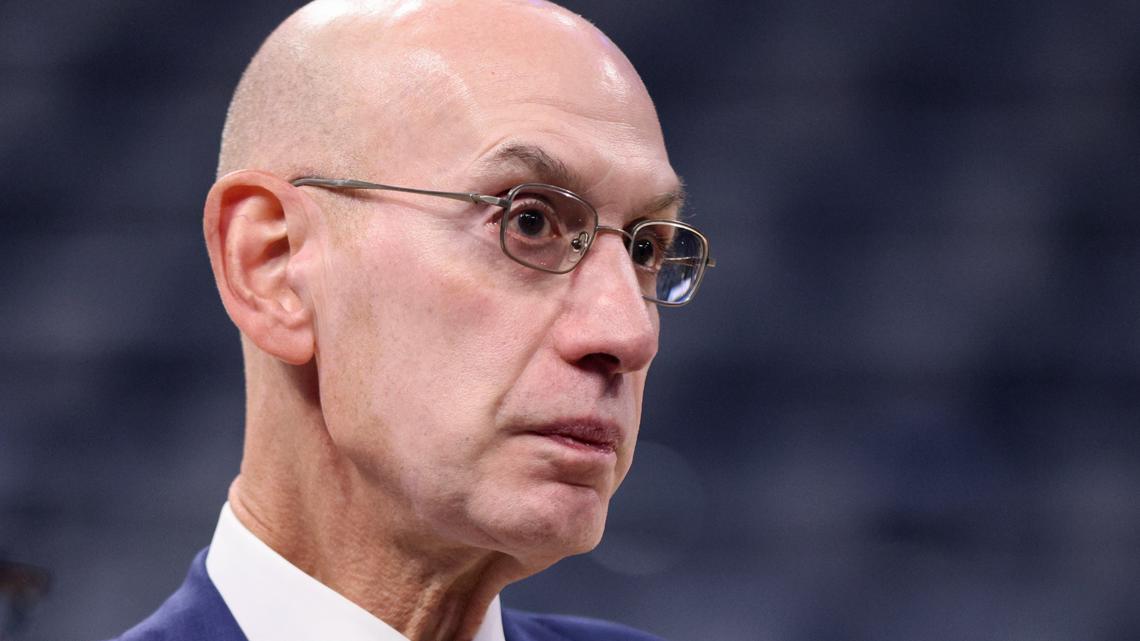
One week out from the election, the Spurs says they’re focused on the ballot box and confident voters will give the green light to fund a downtown arena.
SAN ANTONIO — One week out from a pivotal election that will shape the next steps of the San Antonio Spurs’ downtown arena dreams, early voters continue to weigh in at the ballot box, and proponents and opponents are working to make sure their messages are being heard.
NBA Commissioner Adam Silver could be keeping a close eye on the election result.
In Sports Illustrated’s recent interview with Silver published Oct. 20, the commissioner was asked about teams with “arena issues” in the context of possible franchise relocation. Though the question was framed around teams whose leases expire before 2030 – that doesn’t include the Spurs, whose lease at Frost Bank Center runs through the 2031-2032 season – Silver’s answer could prove relevant, depending on how the election shakes out.
“We wouldn’t be doing our jobs as a league if we weren’t always thinking about how we’re doing in our existing markets,” Silver said in the interview. “There is absolutely no intention now to relocate any particular team, but it becomes part of the discussion. I think as we look at arena situations in given markets, we look at the ebb and flow of population in the country and economic prosperity in particular markets. We always want to make sure that we are in markets that can sustain a competitive team.”
Bexar County voters this fall are being asked to weigh in on whether the county should allocate up to $311 million to the construction of a new downtown Spurs arena; the money would come from a higher hotel room tax rates and rental car tax dollars, which would not go up.
Though that question – laid out in the ballot via Bexar County Proposition B – specifically pertains to the county’s portion of the arena funding pie, passage would effectively trigger commitments from the other parties: up to $498 million from the City of San Antonio and $500 million from the Spurs, who would also cover cost overruns on an arena expected to cost $1.3 billion.
Another ballot measure, Proposition A, would clear $192 million for improvements and upgrades to the Freeman Coliseum and Frost Bank Center grounds amid the San Antonio Stock Show & Rodeo’s own ambitions to increase programming.
The Spurs and rodeo have partnered on a public awareness campaign to boost support for the measures, emphasizing in mailers and at rallies that there will be “no cost to San Antonio homeowners or renters” and that it’s tourists who will foot the bill. The Win Together PAC, associated with the Spurs, has raised at least $7.017 million and spent about $5.5 million through Oct. 26, according to campaign finance reports filed with Bexar County.
The grassroots community organization COPS/Metro and other opponents have continued to call foul on using “public funds for private profit,” pointing out there still hasn’t been an independent cost/benefit analysis of a downtown arena, despite Mayor Gina Ortiz Jones pushing for one over the summer.
As for how closely Silver’s comments could align with the Spurs’ situation, the team itself won’t say. Asked if representatives with the franchise have had recent conversations with the commissioner about next steps beyond the Nov. 4 election, the Spurs said their “focus remains here at home.”
“Props A and B will be funded by visitor dollars, strengthen the East Side and build a downtown home court,” Bobby Perez, the chief legal officer for Spurs Sports & Entertainment, told KENS 5 in a statement. “Visitors will fund an arena and the Spurs take the construction risk. We’re guaranteeing more than $2 billion because we believe in San Antonio. There is no Plan B. We’re all in and we’re confident San Antonio will be, too.”
The $2 billion figure refers to the total amount the Spurs say they’re prepared to invest in the project, including the $500 million arena commitment; $1.4 billion in future private development, in coordination with other companies; and $75 million in community benefits over 30 years.
The new arena would be built along East César E. Chávez Boulevard, in the same plot of land where the former home of the Institute of Texan Cultures is being torn down.
